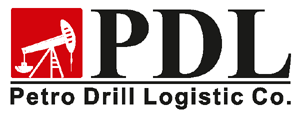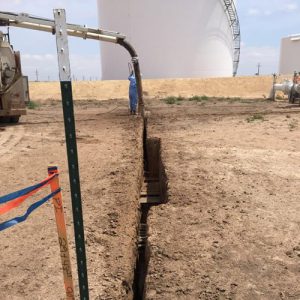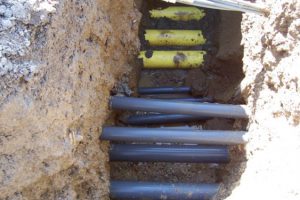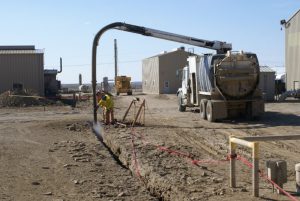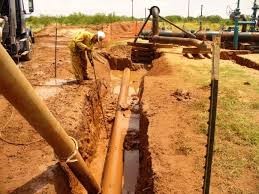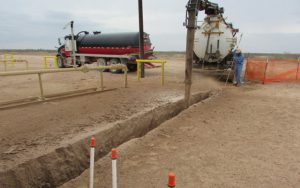The PDL Company has added hydrovac capabilities to our comprehensive offering of trenchless services. Hydrovac is a non-destructive, highly efficient solution that employs pressurized water to safely expose buried pipe and cables.
The PDL serves clients throughout Iraq. PDL has an advanced fleet of 2 new-model Tri-Drive hydrovac trucks, which are professionally managed and operated by a skilled and experienced team deeply committed to your success. Their technical expertise extends to a detailed understanding of all geological and climatic factors that can potentially impact your project.
The PDL Company strictly adheres to the highest HSE protocols on the jobsite. All employees receive the tools, training, knowledge and support required to assess, avoid and mitigate risk. Their thorough, meticulous approach ensures projects are always completed safely and accurately – with no stone left unturned.
What is Hydro Excavating?
This is a commonly asked question when the term is referenced.
Hydro- excavation is the use of water under pressure, in conjunction with a vacuum, to excavate the earth. The use of the water to loosen the soil, and the suction to remove the broken down soil, has been developing for the last several years. Why is hydro excavating becoming especially popular? The fact that there are a tremendous amount of utilities located under our city streets, and more are being installed on a continual basis, is the reason . Anyone who has been involved with a power outage, sewer break, or gas explosion, will understand the importance of excavating carefully and non- destructively, in areas that have a high concentration of utilities.
The basic, hydro excavating piece of equipment, is simply a high pressure washer and vacuum assembly, mounted on a piece of equipment, which will allow movement as needed. In some instances, this could be on a truck chassis, in others; it can be a towable trailer.
The third aspect of the equipment, is the ability to store the excavated material in a tank or truck body, to enable disposal in an area that is remote from the point of excavation. In many cases the use of water to loosen the soil in an area of possible contaminated soil, will require that this material be removed from the construction site. This is one of the negative aspects of hydro excavation; normally the use of the excavated material cannot be used as backfill due to the introduction of water. This is where the use of an air excavation methodology could be the next wave of excavation technology. However, this technology is still in its infancy.
What are some of the common situations that would benefit by the use of a hydro excavator and the ability to loosen the soil with water and vacuum the slurry into a waiting truck?
- Daylighting:
The term daylighting is the process of exposing utility lines of any kind to the daylight. Due to the inherent dangers of excavating around underground utilities, as well as the inability to actually observe the location of the underground utilities, the exposure of these utilities without dangerous destructive excavation is invaluable. Daylighting of utilities is the primary purpose of a hydro excavator. Theoretically, if you know where the utilities are, you will not damage or break them.
- Potholing:
The term potholing is a process of exposing utility lines in specific spots along the utility route. For example, if a gas line is known to exist along a roadway, however its exact and specific location is not accurately known, a process of potholing will be performed. At specific distances along the assumed routing of the gas line, a hydro excavator will be used to excavate a small hole in the vicinity of the assumed underground gas line. This small excavation will be enlarged, only to determine the specific location of the utility line. Once the line has been exposed, or daylighted, the location will be accurately marked. Based on the specific location of each of the potholes and the utility exposure to the daylight, the gas line route between the points can be more accurately determined. Once this route is more positively determined, then standard excavation equipment can be used to excavate the remaining portion of the line.
- Broken utility:
The use of hydro excavation to excavate for a broken utility, is a common application of the technique. If a waterline has been broken, and there is water exiting the line, the areas around the broken utility are wet and difficult to excavate. The use of a hydro excavator, due to its ability to vacuum the material into a vessel on a truck, is extremely efficient and successful.
- Difficult excavations:
This is an extremely broad category, however, the proper use of a hydro excavator can facilitate the excavation in difficult conditions. For example, the need to excavate on difficult and extreme hillside conditions. We were installing airport lighting on a hillside that exceeded 30 degrees in pitch. This hillside would not safely support a common excavator. The use of a hydro excavator allowed the excavator itself to be positioned at the top of the slope. Both the waterlines, as well as the vacuum hose, were accessed remotely, to the location of the excavation. Dependent upon the manufacturer of the hydro excavator, the use of the water and suction can be as far as 600 lineal feet away from the equipment. By utilizing a hydro excavator, the excavation which was a 4 foot by 20 foot deep cylindrical excavation, was accomplished in 4 hours. In addition, the excavated materials were vacuumed into the tank of the hydro excavator for removal to a disposal area. There was no need to stockpile the excavated material on the hillside, no need to double handle the material, and no requirement to reclaim the area around the excavation, due to the lack of any type of damage, made by the process.
- Low clearance excavations:
In many instances, especially in renovation projects, the need to excavate utility trenches and additional foundation excavations must occur under a building, or within areas of very limited headroom. The use of a remote hydro excavator, on the exterior of the structure, and the maneuvering of only the waterlines and vacuum hoses under the structure, allows an economic and efficient means of excavation. In addition, the removal of this material is performed during the excavation operation due to the vacuuming into the holding tank on the truck.
- Underpinning applications:
The term underpinning, references a process by which an existing foundation is stabilized, to allow an excavation alongside to be below the existing bottom of footing. An underpinning operation is a serious structural technique that requires specific excavation in a systematic manner. The use of a hydro excavator to perform this excavation is both efficient and economical. In addition, the lack of any type of trauma to the surrounding soil is beneficial to the requirement, not to disturb the surrounding earth.
- Material removal:
The best way to explain this process is to describe a project where I used a hydro excavator to remove difficult to reach material. We had to replace the sand in a sand filtration system, within a water treatment facility. This sand had been contaminated and needed replacement. Although the top of the filtration beds were actually open to the daylight, the area of the plant did not allow easy access for mechanical equipment of any kind. Due to this difficulty, we decided to use a hydro excavator to remotely vacuum the sand from the filtration bed, into the tank on the hydro excavator. In this manner, we eliminated all of the coordination and difficulty in trying to maneuver excavation equipment into the plant to remove the material.
- Post hole digging:
This is a basic reference to a technique to excavate a hole for a post or pole, such as a telephone pole. The ability to simply move along the side of the street and excavate as required, without the need for additional room for excavated materials or separate excavation equipment is extremely efficient. In addition, the safety aspect for pedestrians is important, there are no backhoes backing up, or working, and there are no open excavations, left without being covered. The use of a hydro excavator to excavate deep, cylindrical excavations is very efficient.
- Contaminated waste removal:
The use of a hydro excavator to remove hazardous waste is another great method of utilizing the hydro excavating technology. The ability to vacuum material into a truck from a remote area, removes the issue of heavy equipment or dust producing apparatus from the operation.
